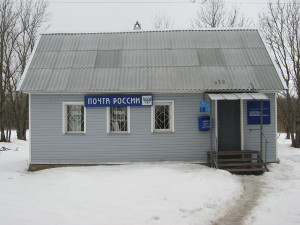
For two years now, Russia has been engulfed in a financial and economic crisis that particularly affects the banking sector. Russian government policy toward the banks is a telling example of how the interests of Kremlin-connected influence groups are considered to be more important than the strategic issues of development of an entire industry that is vital for the economy.
The inconsistency of government policy and its dependence on “state oligarchs” can be clearly seen in the circumstances surrounding the creation of a “postal” bank on the basis of Russian Post—an archaic state behemoth that is notorious for its slowness and disorder, but that has 40,000 post offices around the country (Russia’s largest bank, Sberbank, only has 19,000 branches.) In 2007, when the Russian elite was in a state of euphoria, and when it seemed that the flow of petrodollars will never end, former Sberbank Chairman Andrei Kazmin became the head of Russian Post, and his eternal companion Alla Alyoshina became the head of the subordinate Svyaz-Bank. The figure behind both of them was Leonid Reiman, the then-powerful minister of information technologies and communications and, as is usual, a St. Petersburg native close to Putin.
Yet these plans were disrupted by the 2009 crisis. Svyaz-Bank came to the brink of bankruptcy and was only salvaged by Putin’s forceful decision. Its recapitalization cost the government 142 billion rubles. However, according to Vedomosti newspaper, a huge hole in the bank’s balance had been formed because of a risky gamble on the securities market, as well as a mass issuance of credits that were not guaranteed by deposits (totaling 55 billion rubles), including to dubious companies. The state corporation Vnesheconombank purchased 98 percent of Svyaz-Bank’s shares, receiving $2.5 billion from the Russian Central Bank to cover its debts.
Despite the wasteful failure of this project, already in December 2009 Vnesheconombank’s advisory council approved Svyaz-Bank’s development strategy that provided for the creation of a Postal Bank on its basis, with the participation of the aforementioned Russian Post. The infighting in Putin’s close circle got in the way, however: Reiman lost the position of communications minister, entered into a bitter conflict with the new minister, Igor Shchyogolev (a former KGB operative from St. Petersburg,) and lost.
Yet the idea of a Postal Bank did not disappear with the thieving Reiman. In 2013, Dmitri Strashnov, considered to be a protégé of an even closer friend of Putin, “Ozero” cooperative member Yuri Kovalchuk, became the new head of Russian Post. The reliable Vneshtorgbank (VTB) was called in, and in the summer of 2015, the Russian government approved the creation of a Postal Bank on the basis of—surprise, surprise—Vneshtorgbank and Russian Post.

Why build a new state-owned bank on the basis of 40,000 post offices? This is a political question rather than an economic one. As Economic Development Minister Alexei Ulyukaev recently sighed, at least there will be competition among state-owned banks. The project is being developed contrary to the global trend, whereby banking services are increasingly moving to the Internet. Even Sberbank is reducing the number of its branches, while the new Postal Bank is planning to take on an expensive maintenance of branches in Russia’s remotest corners. Who will pay for this luxury, especially at the time of crisis? The question is rhetorical—it will be the state, that is, the taxpayers. Instead of privatization, we are seeing a virtual government takeover of the banking sector; instead of modernization we are seeing a move to archaism. The most important thing is for Putin’s friends to be satisfied.





